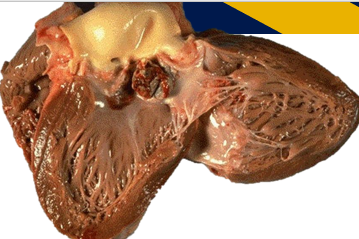Neoplasia
Neoplasm (Cancer)
Neoplasm is new tissue growth that is unregulated, irreversible and monoclonal. Monoclonal means the cells are derived from a single mother cell. Similarly, the term 'hyperplasia' is definied as the cells are not derived from a single parent cell. Moreover hyperplasia may be pathological and some times physiological. Hyperplasia is reversible to a certain period. Hence Hyperplasia is not consider as cancer.
Cancer is the 2nd leading cause of death. Most common caners which incidence in adults are breast/prostate cancer, lung cancer, and colorectal cancer (cancer in large intestine).
Causes of neoplasm:
Carcinogens are the substance which increase the DNA damage which develops to cancer.
Chemical carcinogens include:
1. Alcohol
2. Arsenic
3. Cigarette smoke
4. Vinyl chloride
5. Beryllium etc.
Some viruses also damage the DNA and cause cancer. Such viruses are called oncogenic viruses. Eg. HBV, EBV, HHV-8, HTLV-1 etc.
Some radiation rays are also included in carcinogens. These radiations generates hydroxyl free radicals which is lethal.
Carcinogenesis:
Carcinogenesis means the development of cancer cells from the stem cell.
Cancer formation is started by the damage to DNA of the stem cell. There are categories of development of cancer cells i.e oncogenes. includes growth factor (GF), GF receptors, singnal transducers, nuclear regulars and cell cycle regulators.
1. Growth Factors induce cell growth
Eg. PDGFB (Platelet-derived growth factor-B) forms Astrocytoma (Glial cell tumor in the brain).
2. GF receptors mediates signals from the GF.
Eg. ERBB2 [HER2/neu] It is a epidermal GF recepto which cause breast carcinomas.
3. Signal Transducers. Eg. Ras gene family.
i. Ras is a protein gene which bind with GDP to form GTP and activated by itself.
ii. Activated Ras send continuous growth signal to the nucleus . In normal individuals, at a certain stage Ras inactivate itself by convert GTP to GDP which is regulated by GTPase enzyme.
iii. But in patients with mutated Ras, Ras itself inhibits the activity of GTPase. Hence, for those person continuous growth signal will be deliver to the nucleus which involves non stop cell division.
4. Cell cycle regulator. cyclin and cyclin-dependent Kinase. These substance phosphorylation the retinoblastoma protein, which promote the cell division during cell cycle in G1/S point.
Tumour suppression:
Substance like p53 and Rb (Retinoblastoma) regulates the cell growth by suppress them when the growth reaches the maximum.
p53 regulates the cycle from G1 to S phase.
If a particular DNA damaged, then p53 slows the cell division and promote the repair enzymes. In case, if the repair enzymes failed to repair the damage, p53 induces apoptosis. Simply p53 disrupts Bcl2 which stabilise the mitochondrial membrane. So that cytochrome C will be released from mitochondria which then activate apoptosis.Rb holds E2F.
E2F is a transcription factor which is important for the transition to the S phase during cell cycle. E2F will release when Rb is phosphorylated by CDK4 (Cyclin dependant kinase 4) complex. In case of mutated Rb, free E2F results in continuous progression through cell cycle and uncontrolled cell growth.
Tumour progression:
All the mutated cell accumulate is a place and start invading and spread into the tissues. These cell needs blood supply for their growth, so they form new blood vessels. This process is called angiogenesis. FGF (fibroblast growth factor) and VEGF (Vascular endothelial growth factor) are produced by the tumour cells and forms new vascular supply.
All the mutated tumour starts to produce abnormal proteins which shows MHC-1. CD8+ T immunological cells detect this kind of mutated cells and destroy them as much as possible.
Tumour spread:
Spread of tumour from one organ to other organ is called metastasis. Lymphatic system is responsible for immunological actions in our body. So they are most susceptible for metastasis. Logically lymphatic nodes are inter connected like a network, so metastasis happens easily. Blood is the other way for metastasis.
Types of tumours:
There are 2 forms of tumour.
1. Benign tumours
2. Malignant tumours
Benign tumours:
They are well differentiated. The growth in an organised way. Consist of uniform nuclei. They have very minimal mitotic activity (Cell division). Mostly No metastasis and no invasive.
Malignant tumours:
There are poorly differentiated and growth will be disorganised. Nuclear will be pleomorphic (different forms).They are invasive and mostly involves fast metastasis.







Comments
Post a Comment